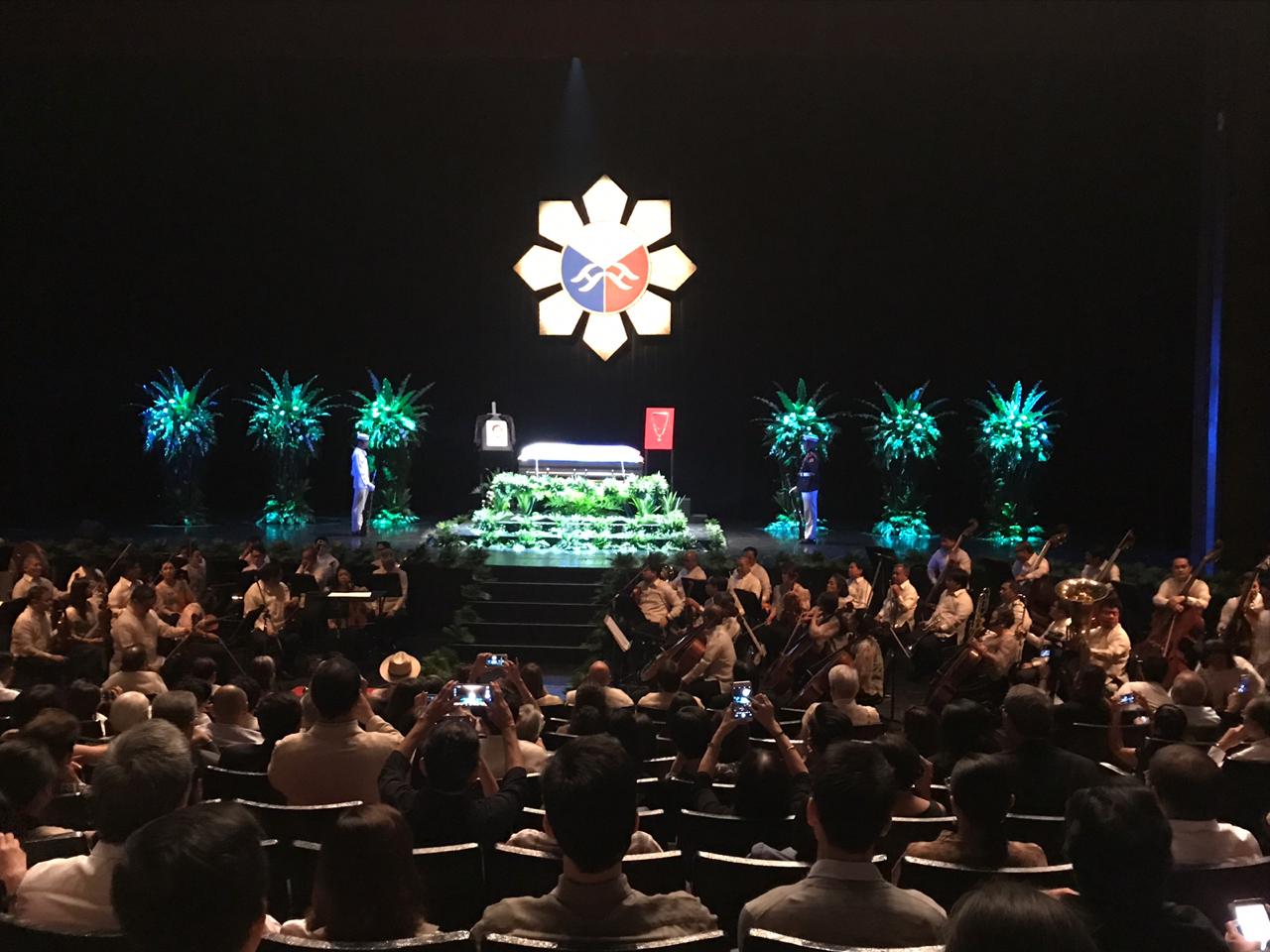
MANILA, Philippines — Five national artists honored National Artist for Architecture Francisco “Bobby” Mañosa in a state necrological service at the Cultural Center of the Philippines (CCP) on Sunday.
National Artists Virgilio Almario (Literature), Bienvenido Lumbera (Literature), Alice Reyes (Dance), Amelia Lapeña Bonifacio (Theater), and Ryan Cayabyab (Music) each offered flowers for the late architect.
In his tribute to Mañosa, Cayabyab said the late architect’s edifices had inspired him to write his own pieces, including the “Da Coconut Nut,” which was inspired by the Mañosa-designed Coconut Palace.
“My dad loved that song,” Isabel “Bambi” Mañosa-Tanjutco, confirmed in her own speech.
Another example was the Our Lady of Peace Shrine, more popularly known as the Edsa Shrine, which Mañosa also designed. Cayabyab said he wrote a complete congregational mass dedicated to the edifice.
He said he also wrote most of his orchestral works at the San Miguel headquarters building in Mandaluyong, which was among Mañosa’s earlier works, calling himself the “phantom of the San Miguel building” during those years.
Mañosa, whose design philosophy is “I design Filipino, nothing else,” had championed the cause of the Filipino identity in architecture. The San Miguel headquarters was said to have drawn inspiration from the rice terraces.
READ: Francisco “Bobby” Mañosa, tireless champion of modern Filipino architecture
“I believe we are kindred spirits. I know that Architect Bobby’s first love was music. But times hasn’t really changed, our parents still don’t want their children to pursue music,” Cayabyab said, referring to the famous anecdote that Manosa’s first love was music, but he has persuaded by his father to take up architecture instead.
Throughout his life, Mañosa had played jazz piano.
Leandro Locsin Jr., a son of National Artist for Architecture Leandro Locsin, paid tribute to the long friendship between the two national artists.
“Their connections were very strong. They were classmates at UST Architecture, both of them were pianists and avid music fans having a real love for music early on,” he said.
“In the architecture program then, discussions about the issues of Philippine architecture were rife. The question ‘Is there a Filipino architecture?’ was already current at the time,” he said.
“It appears that Bobby dove into the present, the richly multifaceted expressions of Philippine regionalism, living culture, our own arts and crafts, but also at the same time aware of the worldwide trends. In many respects, Lindy’s (the elder Locsin) architectural design process was one of distillation, revealing the essence of things, abstraction, and expressing forces and essential layers. In contrast, Bobby’s works evolved in a way that is much more direct, immediate, joyous, recognizably Filipino in its motifs,” he added.
There was even consistency with that dichotomy in the music. Locsin, according to his son, leaned towards the classical immortality of the repertoire, while Bobby turned toward the improvisational immediacy of jazz.
“In some ways, their music was their architecture,” he said.
“That we are gathered here today in a building that his good friend designed shows that the road has indeed come full circle,” Locsin concluded, referring to the CCP, one of the famous structures his father designed. /je